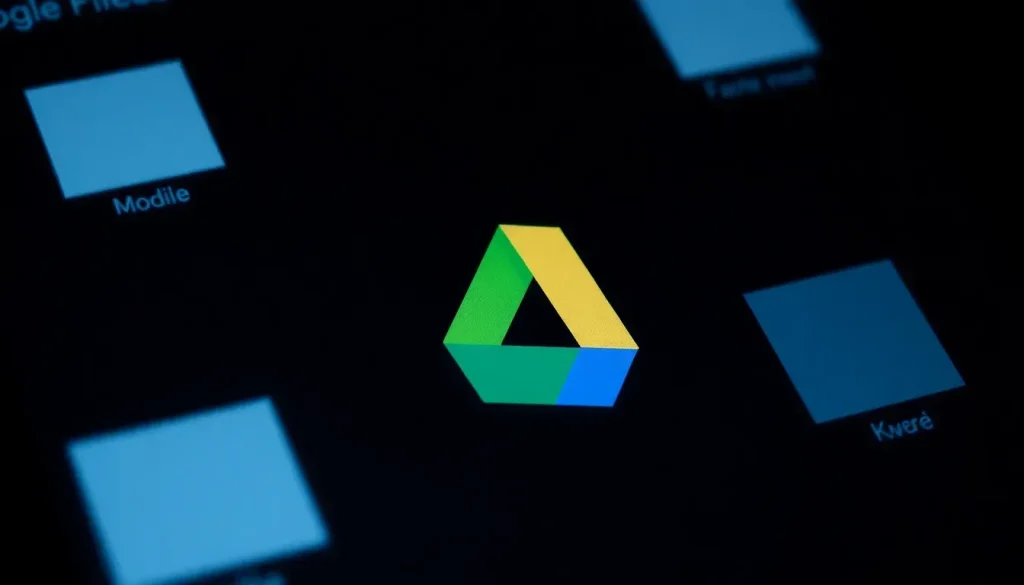Google Drive introduces life-saving feature for your files

Google Drive has taken a significant step in enhancing its security features to protect users from one of the most pressing threats in the digital age: ransomware. This malicious software has wreaked havoc on numerous individuals and organizations by encrypting files and demanding ransom payments for their release. With this new development, Google aims to safeguard users' data and provide peace of mind.
Understanding the implications of ransomware attacks is crucial for both personal and organizational data security. As Google Drive implements new protective measures, users will benefit from enhanced functionality designed to combat these types of cyber threats.
- Understanding Ransomware and Its Implications
- Google Drive's New Ransomware Detection Feature
- What Happens When Google Drive Detects Ransomware?
- Enhancing Data Recovery Options
- How to Organize Files in Google Drive
- Google Drive's Free Storage Capacity
- How to Use Google Drive on Mobile Devices
- Final Thoughts on Google Drive's Enhanced Security
Understanding Ransomware and Its Implications
Ransomware is a type of malicious software that targets computers, locking users out of their files until a ransom is paid. Attackers typically infiltrate systems through:
- Malicious email attachments
- Insecure software applications
- Phishing scams
Once inside a system, the ransomware encrypts files, making them inaccessible. Victims are then faced with a painful decision: pay the ransom or risk losing vital data. This issue affects not only individuals but also businesses, which can suffer substantial financial and reputational damage from such attacks.
Google Drive's New Ransomware Detection Feature
To combat the growing threat of ransomware, Google Drive has integrated a new feature capable of identifying potential ransomware attacks on both Windows and macOS systems. The tool is designed to:
- Detect unusual file changes that may indicate a ransomware attack.
- Automatically pause file transfers to prevent further damage.
- Utilize AI models trained on millions of real-world ransomware samples.
This proactive approach allows Google Drive to monitor file activity continuously, identifying patterns that suggest malicious behavior. The integration of artificial intelligence plays a crucial role in keeping up with evolving ransomware tactics.
What Happens When Google Drive Detects Ransomware?
Upon detecting a potential ransomware attack, Google Drive triggers a series of protective actions:
- It pauses the synchronization of any affected files.
- Users receive an alert both in Google Drive and via email, informing them of the detected threat.
- The platform provides options for users to view which files are impacted and to restore them to a previous, uncorrupted version.
This rapid recovery capability is essential to mitigating disruption and data loss, making it a valuable feature for users. Whether operating within personal accounts or within organizational frameworks, this functionality is designed to minimize damage effectively.
Enhancing Data Recovery Options
In addition to ransomware detection, Google Drive offers robust data recovery options that can be invaluable in the event of a cyber attack. Users can restore files to previous versions easily, allowing for:
- Quick recovery from unintended deletions.
- Restoration of files after corruption due to malware.
- Accidental overwrites of important documents.
This ease of access to file recovery is especially beneficial for businesses, where data integrity is paramount. By allowing users to navigate back to earlier states of their files, Google Drive helps safeguard against both external and internal threats.
How to Organize Files in Google Drive
Maintaining organization within Google Drive is essential for maximizing productivity. Here are some effective strategies for organizing files:
- Create folders for different projects or categories.
- Utilize color coding for quick visual identification.
- Implement a consistent naming convention for ease of search.
By organizing files efficiently, users can ensure that important documents are easily accessible, which can be especially helpful during crisis situations.
Google Drive's Free Storage Capacity
Google Drive offers users a generous amount of free storage space, which is vital for those who may not wish to invest in additional cloud storage solutions. Currently, users receive:
- 15 GB of free storage shared across Google Drive, Gmail, and Google Photos.
- Options for upgrading to paid plans for additional storage.
This free storage capacity is ideal for casual users or those just starting to explore cloud storage solutions.
How to Use Google Drive on Mobile Devices
For users on the go, Google Drive provides a mobile app that allows seamless access to files from smartphones and tablets. Key features include:
- Uploading files directly from mobile devices.
- Editing documents on the go with the Google Docs app.
- Sharing files easily through links or email.
The mobile app ensures that important files are always within reach, making collaboration and productivity easier regardless of location.
To dive deeper into Google Drive's capabilities, check out this informative video about its features:
Final Thoughts on Google Drive's Enhanced Security
With the integration of ransomware detection and improved recovery options, Google Drive is positioning itself as a critical tool for both personal and professional data management. Its proactive approach to cybersecurity not only protects user data but also provides a framework for efficient file organization and recovery.
As cyber threats continue to evolve, tools like Google Drive will be essential in helping users safeguard their important files and maintain productivity in an increasingly digital world.




Leave a Reply